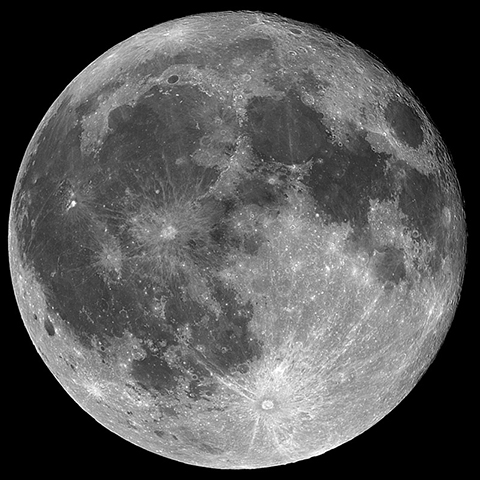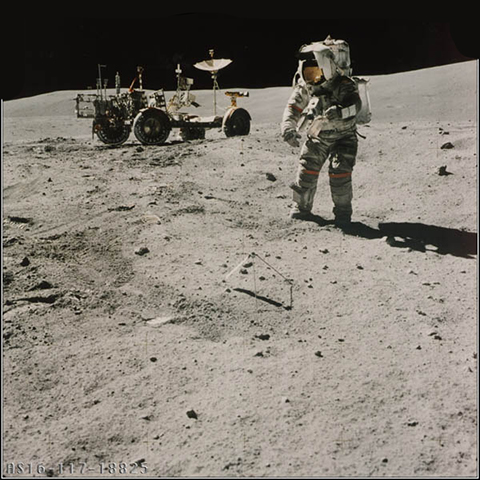Prelude
The Moon is Earth's only natural satellite. It is slightly more than a quarter the size of the Earth and is the fifth largest moon in the Solar System. It is interesting to note that the Moon is the only significant natural satellite in the inner Solar System (Mercury and Venus lack any satellites and Mars has only two small captured asteroids). Formed shortly after the formation of the Earth, the Moon has been an important component in Earth's geologic history and the development of life on Earth. In this lab, you will learn a little more about our nearest cosmic neighbor.
|
Figure 8-1. Our Moon, the Moon. At left, the near side of the Moon during a full moon phase (LRO/NASA). Remember to click on the highlighted images to see larger versions. |
|
What Will You Do Today?
A. Lunar Basics - Review a few of the Moon's physical characteristics
B. Explorers on the Moon - Learn about lunar exploration conducted during NASA's Apollo program
C. Estimating Carater Depth - Use a simple technique to estimate the depths of craters and the heights of mountain peaks
D. Geology of the Moon - Read and interpret the geology of the Moon's near and far side


